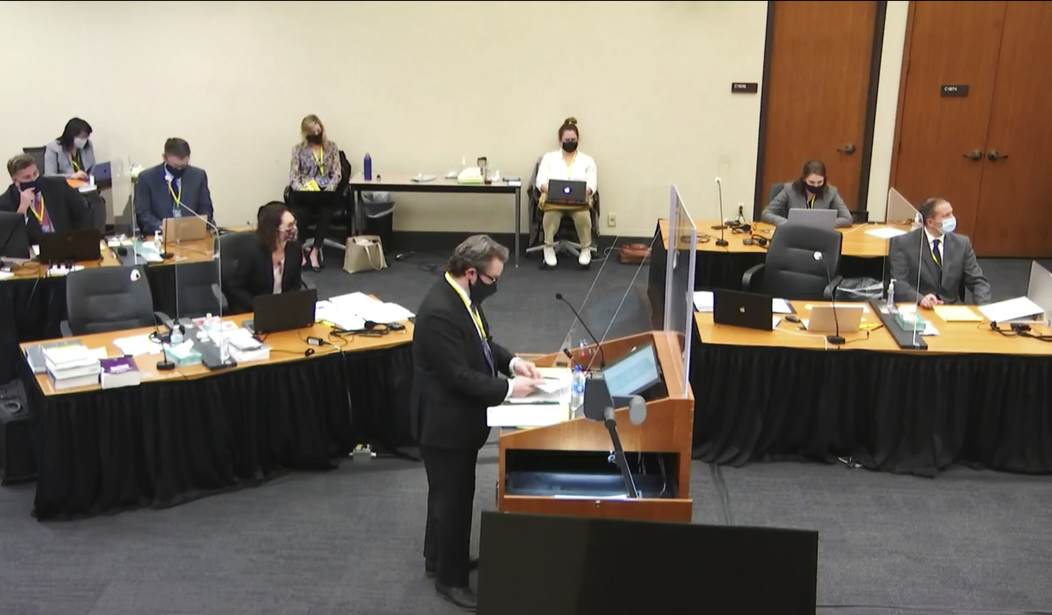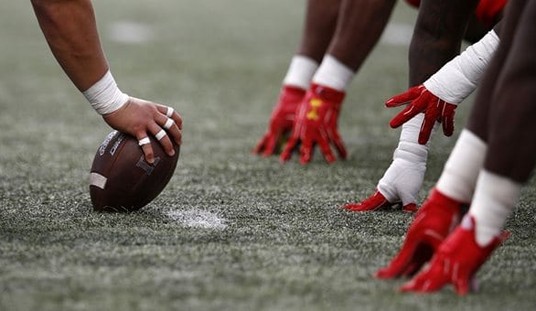Eric Nelson, the attorney for Derek Chauvin, should have himself locked away in a closet with two legal pads and a computer, as he prepares to give his closing argument tomorrow morning on behalf of fired Minneapolis Police Officer Derek Chauvin, on trial for the in-custody death of Eric Floyd.
Every trial lawyer likes to think they are great at giving closing arguments. Cross-examination and closing arguments are the two parts of the trial that are the beating heart of the performance art that is the essence of being a trial lawyer. The well of the courtroom is the stage, and the jury is the audience. They are 15 feet away from you, and it is impossible for them to miss the non-verbal signals you send them and impossible for you to miss the non-verbal signals they send back. If you are a trial lawyer and you don’t understand what I’m talking about, you’re not a very good trial lawyer.
I have always made one note in bold letters to myself at the top of the first page of my notes for closing argument — “DO NOT OVER-REACH ON THE FACTS.”
Many times, in my experience, the battle of closing arguments between the two attorneys becomes a question of credibility. It becomes a question of which attorney they believe — even if just by a marginal difference — when it comes to fairly characterizing the evidence everyone listened to or watched.
Closing argument is the ONLY time in the trial that the attorneys get to “argue” to the jury for the version of facts that is most favorable to their client.
Open “statements” are supposed to be just that — a “statement” about what the upcoming evidence will be. It is supposed to be a preview of what the evidence will show, not an argument.
Closing “arguments” take place after all the evidence has been heard by the jury. It is the one and only chance for the attorneys to speak directly to the jurors about what it is they have heard and what that evidence means. It is their only chance to intermix the evidence with a discussion of the law and how it should be applied to the evidence in the process of them reaching a verdict.
A good defense attorney walks the jury through the process of viewing the evidence and applying the law that leads them to reasonable doubt and a “not guilty” verdict. In a polite and respectful way, you do the deliberation for them and show them the path to follow.
If you have credibility in their eyes in the way you address the evidence — if you don’t OVER-REACH and deny the obvious — your client has a much better chance one or more jurors will take that path during the deliberations.
But when an attorney destroys his or her own credibility by advocating a point of view that is simply unreasonable, you provide the jury with the excuse to ignore everything you have said.
I did not have the opportunity during the first two weeks of trial to watch the proceedings as they were broadcast live, and I have had only a limited amount of time to go back and review some of the cross-examination done by Nelson on the most significant prosecution witnesses. My comments here are not meant, in any way, to be a comprehensive catalog of the issues I believe he should emphasize on appeal. I had hoped to put together such a story but with limited time, and the arguments set for tomorrow morning, it’s a project that simply was not possible.
But among the issues that I was able to see or read about, here are a few that should be hammered home with great emphasis during the course of his closing.
First, I would go right at the medical evidence from the standpoint that the doctors who have testified on behalf of the prosecution cannot separate their training and experience from their opinions. It is very easy for a doctor, looking at records and videos, to make medical judgments about dangerousness and cause of death. But Chauvin is not a doctor, and he was not evaluating Floyd’s condition and the circumstances of his arrest in hindsight using documents and videos.
Insist that the jury not hold Chauvin to the standards of evaluation that were expressed by medical professionals. Accept their “cause of death” testimony, but ignore any conclusions the prosecution has asked them to draw about what Chauvin should have known or should have done from the point of view of a medical professional. And insist that they view the episode based on the assumption that Chauvin and the other officers were entitled to make — that Floyd was an otherwise healthy adult male with no underlying medical conditions that would create an increased risk that normal police techniques of restraint directed at a combative suspect was a threat to his life. There was nothing obvious from Floyd’s appearance — like morbid obesity — which should have informed Chauvin and the others that they needed to take special precautions to keep him safe while restrained.
Second, take “intent” off the table by putting on the video monitor the testimony of prosecution expert Dr. Tobin that Chauvin’s placement of his knee across the neck and upper back of Floyd played no role in the mechanism of Floyd’s death. Back this up with the testimony of Dr. Baker, who performed the autopsy, that there was no injury to Floyd’s airway, nor was there any suggestion that Floyd’s difficulty breathing was in any way connected to the placement of Chauvin’s knee.
This is important because the placement of his knee, and the application of weight on his knee, are both intentional actions done by Chauvin in the process of restraining Floyd. It is critical to separate Chauvin’s actions that cannot be denied — not over-reaching — from the mechanism of Chauvin’s death, as testified to by the prosecution’s experts.
Third, hammer home that the prosecution has repeatedly changed their point of view on the mechanism of Floyd’s death — and that they have done so cynically, in bad faith, and to mislead the jury. They knew that Dr. Tobin would say Chauvin’s knee played no role in Floyd’s death. Yet, they promoted in the opening statements, and with the eyewitness testimony during the first few days of trial, the idea that Chauvin had put Floyd in a “blood choke” with his knee across Floyd’s neck.
Use of force experts testified that the placement of Chauvin’s knee across the neck, and keeping it there for 9 minutes, was an unlawful use of force. All of that was intended to provoke an emotional reaction from the jury, while having nothing to do with Floyd’s death, because the prosecutors knew their medical experts would testify near the end of the case and concede that the knee played no role in how Floyd died.
At the end of the case, when all the medical testimony from the prosecution was complete, their claim is that Floyd’s death was the result of positional asphyxia caused by being in the prone position on the pavement, while his hands were cuffed behind his back and the bodyweight of one or more officers restricted the ability of his lungs to inflate and take in oxygen.
There are several more points that I want to make, but I’m mindful of the fact that this story is already more than 1,200 words long, and it might take me a couple more hours to finish my thoughts. So, I’m going to end “Part One” here and return a bit later today to finish with my unsolicited advice.













Join the conversation as a VIP Member